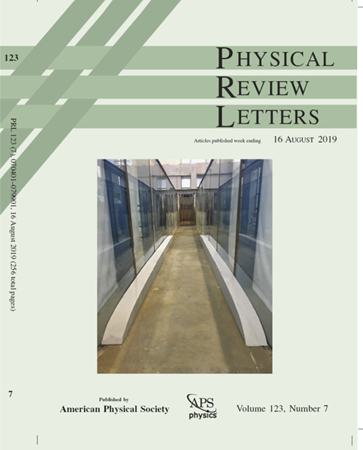Heavy Neutral Leptons via Axionlike Particles at Neutrino Facilities
IF 9
1区 物理与天体物理
Q1 PHYSICS, MULTIDISCIPLINARY
引用次数: 0
Abstract
Heavy neutral leptons (HNLs) are often among the hypothetical ingredients behind nonzero neutrino masses. If sufficiently light, they can be produced and detected in fixed-target-like experiments. We show that if the HNLs belong to a richer—but rather generic—dark sector, their production mechanism can deviate dramatically from expectations associated with the standard-model weak interactions. In more detail, we postulate that the dark sector contains an axionlike particle (ALP) that naturally decays into HNLs. Since ALPs mix with the pseudoscalar hadrons, the HNL flux might be predominantly associated with the production of neutral mesons (e.g., π0,通过类轴子粒子在中微子设施中的重中性轻子
重中性轻子(hnl)通常是非零中微子质量背后的假设成分之一。如果光线足够充足,它们可以在类似固定目标的实验中产生和检测到。我们的研究表明,如果高收入者属于一个更富裕但更普遍的黑暗部门,他们的生产机制可能会大大偏离与标准模型弱相互作用相关的预期。更详细地说,我们假设暗扇区包含一种类似轴子的粒子(ALP),它会自然地衰变成hnl。由于ALPs与伪标量强子混合,HNL通量可能主要与中性介子(如π0, η)的产生有关,而不是与电荷强子(如π±,K±)的产生有关。在这种情况下,负责HNL产生和衰变的物理并不直接相关,像DUNE这样的实验可能对与标准模型耦合太弱而无法通过弱相互作用产生的HNL敏感,因为HNL通常在i型跷跷板机制中起直接作用。2024年由美国物理学会出版
本文章由计算机程序翻译,如有差异,请以英文原文为准。
求助全文
约1分钟内获得全文
求助全文
来源期刊

Physical review letters
物理-物理:综合
CiteScore
16.50
自引率
7.00%
发文量
2673
审稿时长
2.2 months
期刊介绍:
Physical review letters(PRL)covers the full range of applied, fundamental, and interdisciplinary physics research topics:
General physics, including statistical and quantum mechanics and quantum information
Gravitation, astrophysics, and cosmology
Elementary particles and fields
Nuclear physics
Atomic, molecular, and optical physics
Nonlinear dynamics, fluid dynamics, and classical optics
Plasma and beam physics
Condensed matter and materials physics
Polymers, soft matter, biological, climate and interdisciplinary physics, including networks
 求助内容:
求助内容: 应助结果提醒方式:
应助结果提醒方式:


